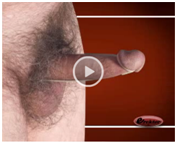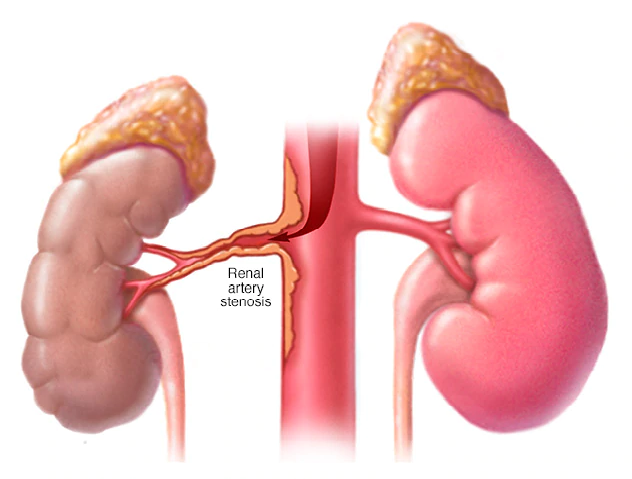Modern
diet and lifestyle, along with global warming, are contributing to an alarming
phenomenon -- kidney stones in children.
Credit: University of Michigan
Health System
When Lisa Garnes received a call from her daughter’s daycare saying that 3-year-old Emma was complaining of back pain, she never dreamt the cause would be a condition often associated with middle aged men: kidney stones.
When Lisa Garnes received a call from her
daughter’s daycare saying that 3-year-old Emma was complaining of back pain,
she never dreamt the cause would be a condition often associated with middle
aged men: kidney stones.
They
said that Emma was doubled over in pain and saying that her back hurt her,”
says Garnes.
Garnes
took her to the pediatrician, who suggested it was a urinary tract infection. A
half hour later, she called again to tell her doctor that her daughter couldn’t
keep anything down. The doctor suggested taking her to the ER.
After
a battery of tests, including an ultrasound, the doctor returned with the news:
she had kidney stones.
“It
was quite hard to believe,” Garnes says.
The
growing incidence of kidney stones in children can be linked to the modern diet
and lifestyle, says Gary Faerber, MD, a urologist at the University of Michigan
Health System.
“I
am seeing more and more children who have kidney stones,” says Faerber. “It’s a
real phenomenon.”
To
treat Emma, urologists performed two lithotripsies to break up the stones and
performed surgery on a tough one she couldn’t pass. Doctors said she had high
levels of oxalates (found in many fruits and vegetables) in her system, which
required putting her on a low oxalate diet. Oxalates can be found in
strawberries, blueberries, raspberries, chocolate, peanut butter and nuts.
Doctors also suggested she spike up her water intake.
Typically,
kidney stones are found in adults between the ages of 35 and 60 but children
can get them, too. A family history of kidney stones is also a significant risk
factor.
Children
today seem to live a lifestyle that puts them at risk of kidney stones, meaning
they consume sugar-filled drinks and a fast-food diet that is high in sodium, a
known risk factor in the formation of kidney stones, says Faerber.
“The
sedentary lifestyle we’re starting to see in the younger age group and the
pediatric group is also a risk factor because we know that obesity increases
the risk of forming kidney stones,” he adds.
The
most common kidney stones in the U.S. are calcium oxalate stones.
Oxalates
are found in high concentration in fruits and vegetables such as leafy green
vegetables and strawberries.
Recent
research has shown a link between global warming and dehydration.
The
more dehydrated one becomes, the more concentrated the urine becomes, which
forms crystals and crystals form into kidney stones, Faerber adds.
Recent
studies in global warming indicate that the number of patients yearly who are
treated for kidney stones is going to increase from 1 million to 2 million.
The
most common reason people have kidney stones is that the urine becomes super
saturated and it doesn’t take much for a small crystal to form in the urine.
Crystal can grow into stones and get larger and larger as long as they sit in
the super saturated fluid. This is why it’s really important for kidney stone
patients to make sure they keep their urine really diluted, Faerber says.
The
most common symptoms in children with kidney stones are back and abdominal
pain. Parents may often mistake their child's symptoms for appendicitis or
gastritis. Kidney stones tend to be way down on the list of possible problems.
Doctors
recommend for children between the ages of 5 and 10 who have kidney stones to
drink six glasses of water a day and those kids over 10, to drink 10 glasses.
Treatment
·
If stones are small, doctors
recommend for the children to pass them on their own.
·
If the stone needs to be treated,
shockwave lithotripsy is used. The procedure occurs under an anesthetic. Sound
waves are used to break up the stone into small pieces, which the child can
then pass.
·
Sometimes doctors perform a
ureteroscopy. They pass a very small miniaturized instrument through the
urinary system and treat the stone with a laser.
·
In cases where the stone is very
large, access to the kidney is made through a very small incision in the back.
Using a small scope the urinary system is entered, the stone is broken up and
the pieces are then retrieved."
“The
main takeaway is to get your child to stay away from sugar filled drinks,
sodas, colas and go to something natural like plain old water,” he says.
University of Michigan Health
System. "Kidney Stones In Children On The Rise, Expert Says."
ScienceDaily. ScienceDaily, 5 May 2009.
<www.sciencedaily.com/releases/2009/05/090504211038.htm>.




